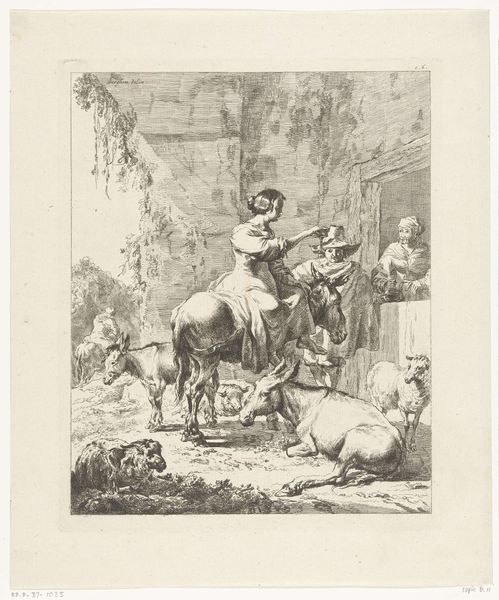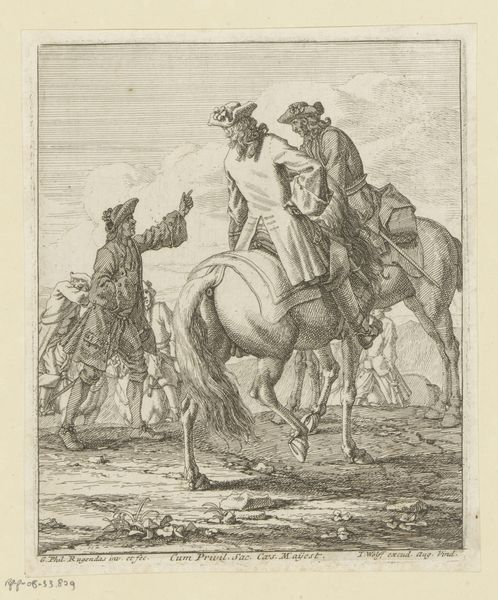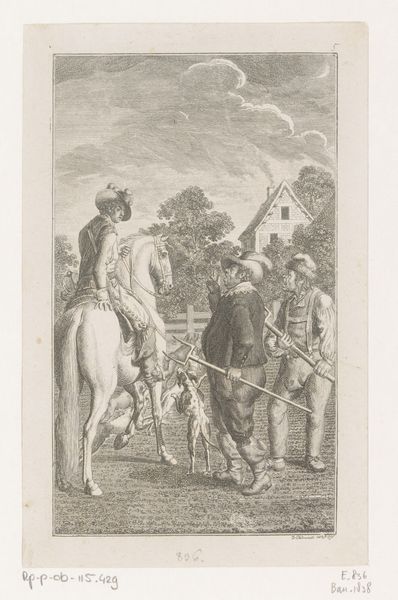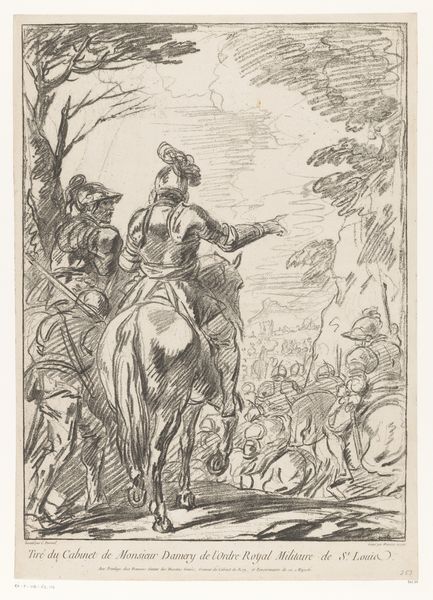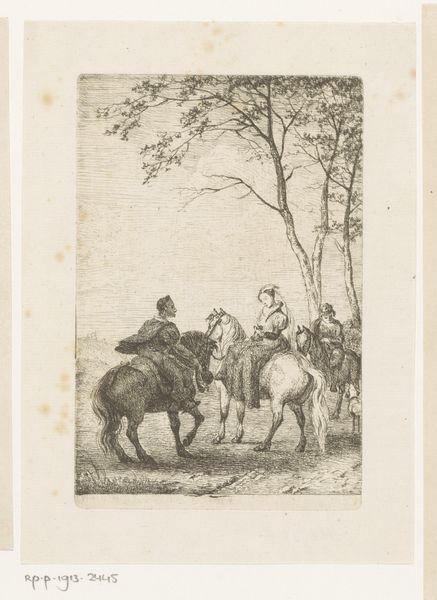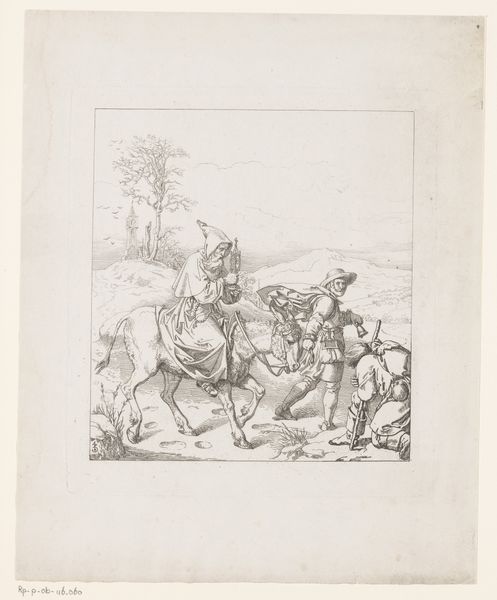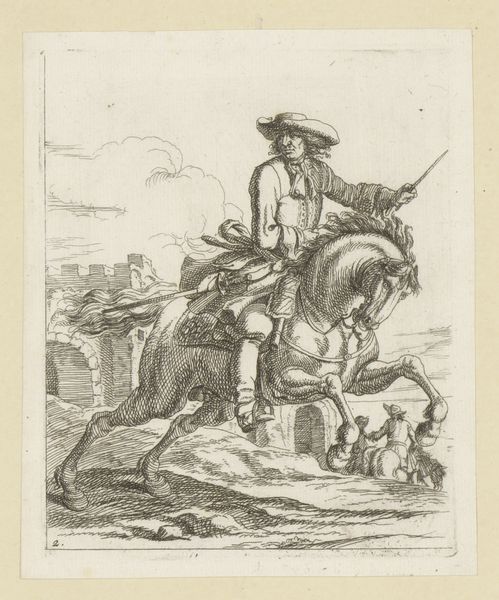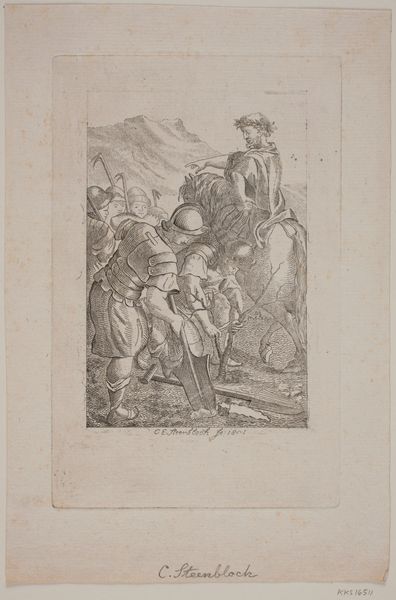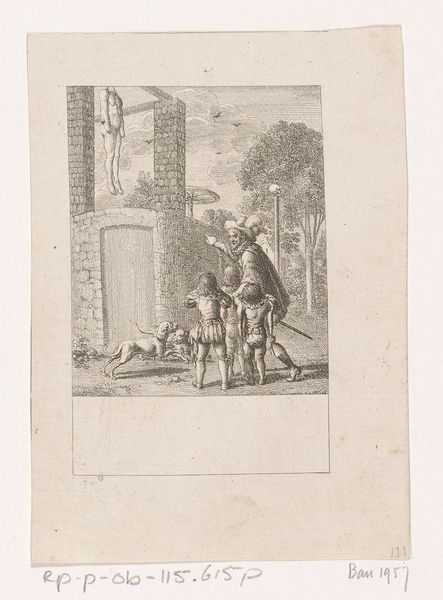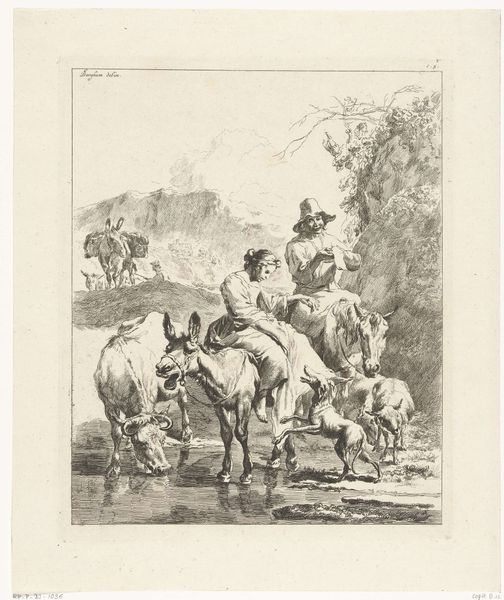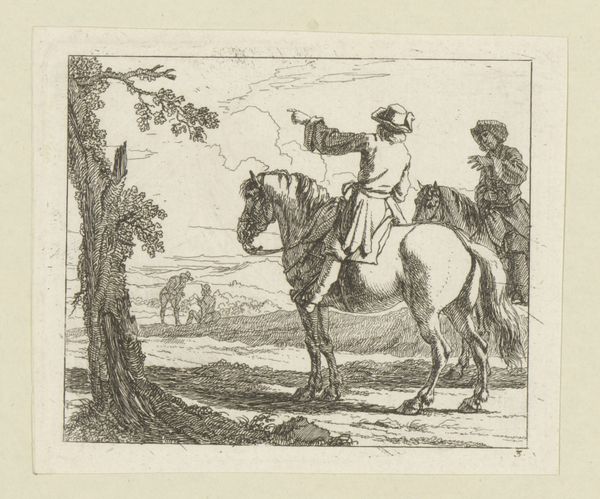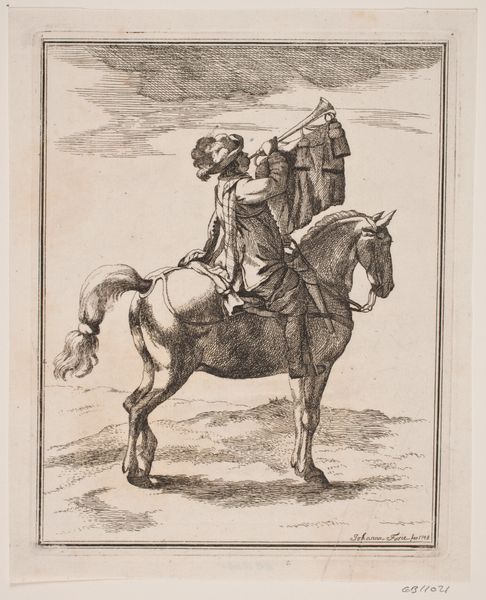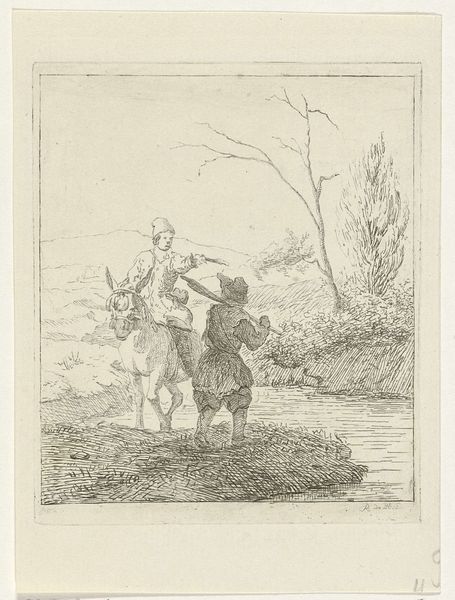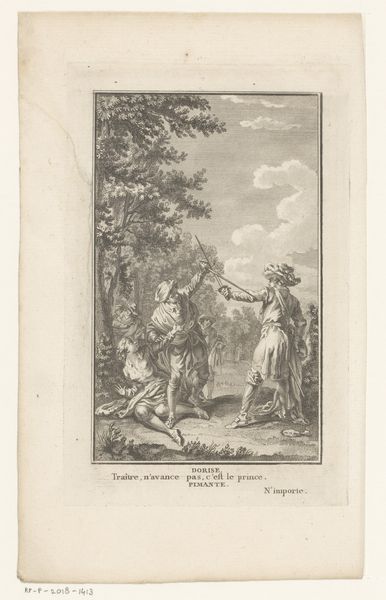
print, engraving
#
portrait
#
aged paper
#
baroque
# print
#
old engraving style
#
figuration
#
line
#
genre-painting
#
history-painting
#
engraving
Dimensions: height 217 mm, width 160 mm
Copyright: Rijks Museum: Open Domain
Editor: This is "Titelprent met twee soldaten" by Charles Parrocel, created sometime between 1698 and 1752. It's currently housed in the Rijksmuseum and made with engraving. I'm really drawn to the texture and the age of the paper, you can really see the lines created by the engraving process. How would you approach understanding this piece? Curator: Let's start by looking at the process of creating an engraving like this in the 18th century. Think about the craftsman involved. The engraver is essentially reproducing an image through a laborious process. How does this reproductive labor change our perception of artistic originality? Editor: I see what you mean. It's not just about Parrocel’s design; it’s about the skill of the engraver and their interpretation. So, we should consider the materials used. Copper plates weren’t cheap, right? What kind of patron would support this kind of piece? Curator: Exactly! Consider the context. Parrocel was "Peintre du Roy"—Painter to the King. This piece speaks to the military interests of the French monarchy, intended perhaps to ennoble its armies by capturing military scenes, as practice. Also consider: does the mass production of prints affect its value? Editor: That's a good point, if it was widely accessible does that democratise art? I hadn't really thought about it that way before. Curator: It prompts us to challenge traditional boundaries between "high" art and more commonplace reproduction, drawing us to consider art’s social life. Editor: This has been really insightful, considering not just the artist but the entire material production process really opens up the interpretation of the work! Thanks. Curator: My pleasure. Looking closely at process and context brings these historical works into sharp focus.
Comments
No comments
Be the first to comment and join the conversation on the ultimate creative platform.
